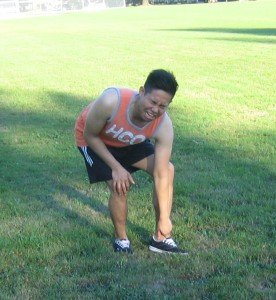Achilles tendinopathy triggers pain, stiffness and swelling in the Achilles tendon which links the heel bone to the calf. It is believed to be caused by repeated microtrauma to the tendon.
After every injury, the tendon could not fully heal as usual. It simply means that over time, damage to the tendon accumulates which leads to the development of Achilles tendinopathy. Various factors that lead to repeated microtrauma include the following:
- Overuse of the tendon especially those who engage in running or activities that involves repetitive movements.
- Exercising or training with inappropriate footwear
- Training or exercising on sloped or hard surfaces
- Poor training or exercise techniques
- Abrupt changes in the training routine or regimen
What are the indications of Achilles tendinopathy?

The characteristic symptoms of Achilles tendinopathy include pain and stiffness around the Achilles tendon. The discomfort and stiffness gradually develop and usually worse upon waking up in the morning.
Some individuals experience pain during physical activity but the pain is worse after. Among those who run, they might notice pain at the start that later settles and becomes bearable and followed by an increase in pain if running is stopped.
The pain caused by Achilles tendinopathy can prevent the individual from performing his/her daily activities. There is also pain if the area around the Achilles tendon is touched. In addition, there is minimal swelling as well.
Management
There are various treatment options available to manage Achilles tendinopathy.
Rest
The individual should take time away from sports or other forms of physical activity if he/she has Achilles tendinopathy. Initially, stop any high-impact activities. As the pain improves, the individual can restart exercise as the pain allows.
Pain medications
Pain medications such as ibuprofen or paracetamol can reduce the pain. Just remember that these medications should not be used more than 7-14 days. The reason for this is that they might reduce the ability of the tendon to heal in the long term.
Ice packs
Applying an ice pack is beneficial in alleviating the pain and reduce the swelling in the early phases of Achilles tendinopathy. An application should last for 10-30 minutes.
Orthotics
Changes in the footwear used or special inserts to lift the heel in the shoes might be recommended to alleviate the symptoms.
Exercises for the Achilles tendon
There are special exercises that stretch and strengthen the Achilles tendon. These exercises can help reduce the pain and stiffness.
